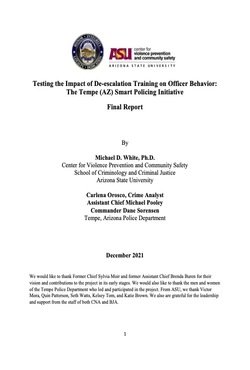By National Academies of Sciences, Engineering, and Medicine.
Injury and death from use of excessive force by police officers remain a common concern in countries across the globe. Despite local, national, and international attempts to legislate and provide guidance for police use of force, there continue to be global accounts of excessive force by law enforcement. Reports of officer-involved killings, injuries to citizens, and attempts to control protests and demonstrations with chemical irritants, rubber bullets, and sometimes shooting into crowds with live ammunition frequently appear in the press worldwide. However, reliable data on and accounting for these incidents are both lacking.
Policies and Practices to Minimize Police Use of Force Internationally, the third in a series of five reports produced for INL, addresses what policies and practices for police use of force are effective in promoting the rule of law and protecting the population (including the officers themselves). This report looks at what is known about effective practices and their implementation and identifies promising actions to be taken by international donors in their efforts to strengthen the effectiveness of law enforcement agencies.
Washington, DC: National Academies Press, 2022. 84p.





